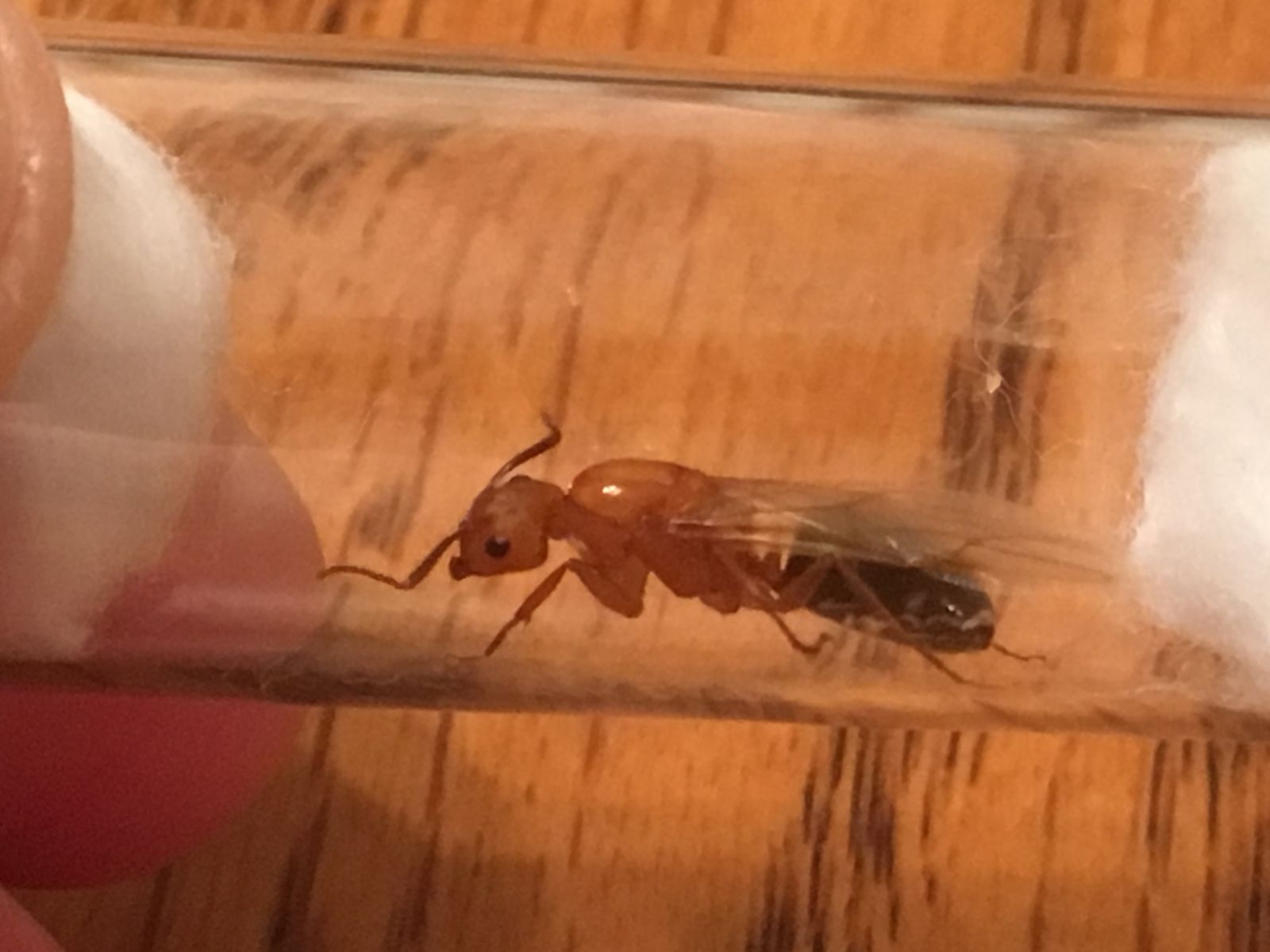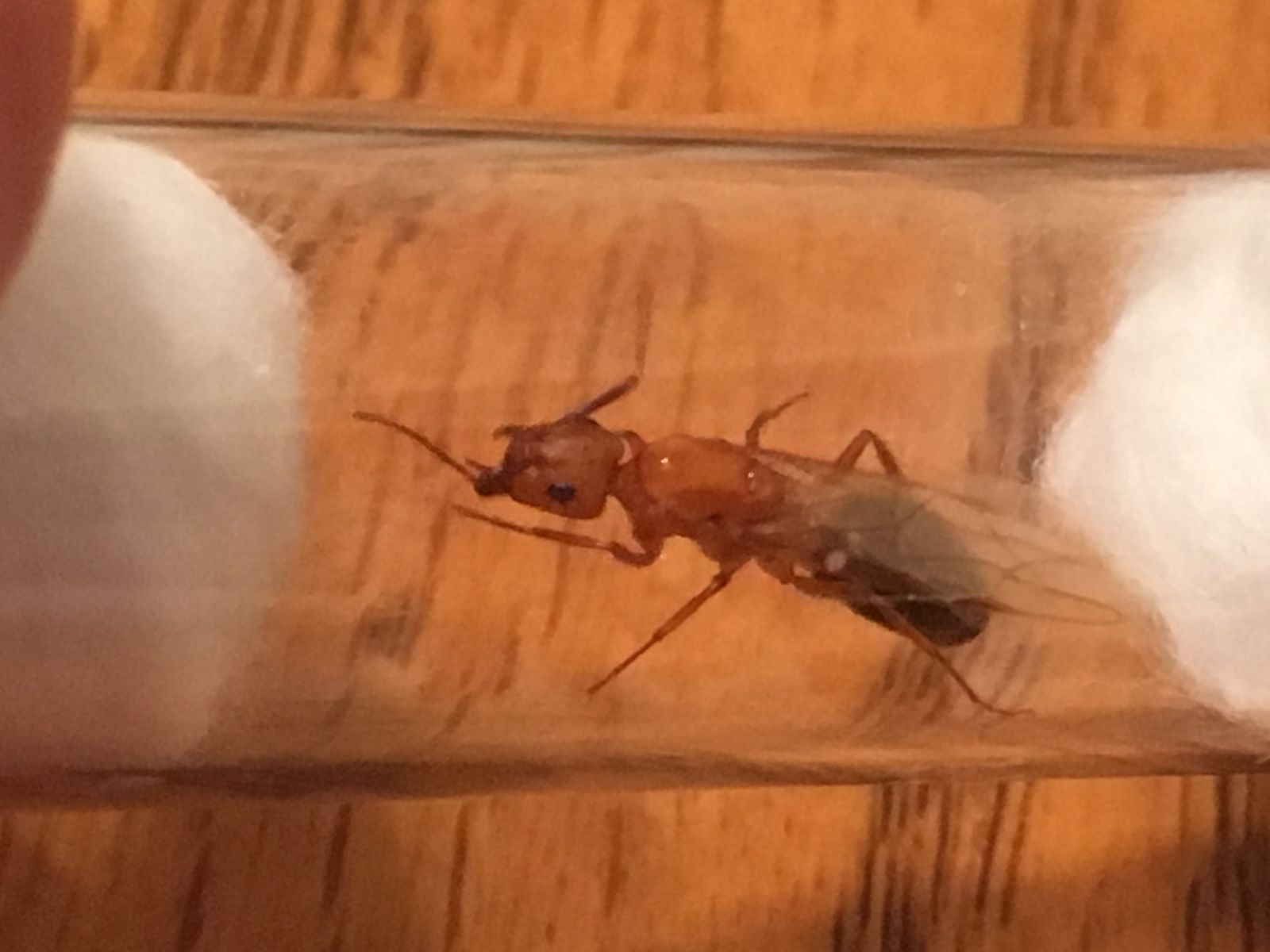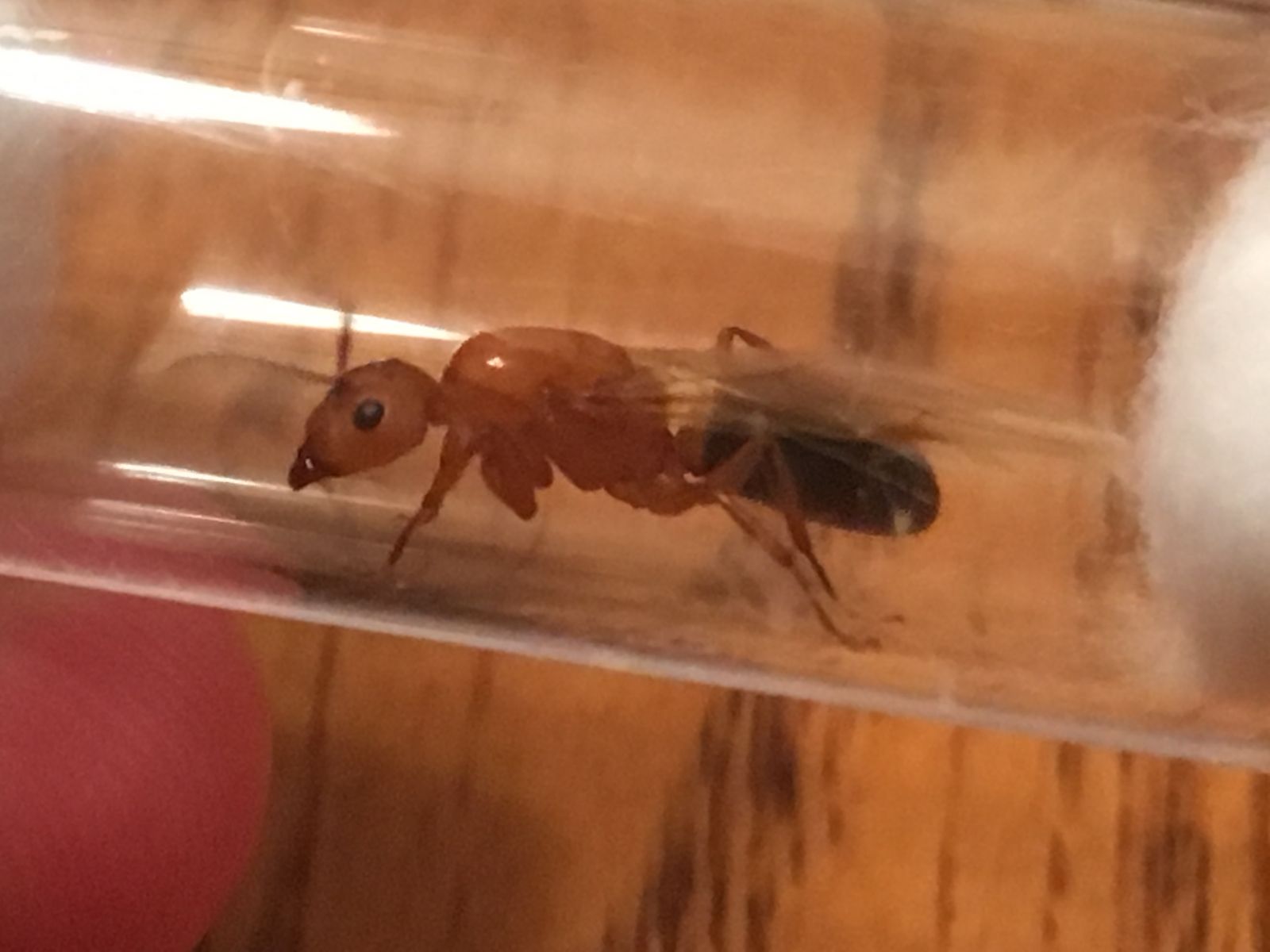I found an alate on a brick wall in my open carport (the light was on in the carport) at 12 AM in Gainesville, FL. The area is surrounded by houses with small yards and a few trees.
The alate is 14 mm long (my biggest yet!). She has a black gaster and red head and mesosoma. It looks like she has one node with a pretty significant spike.





















